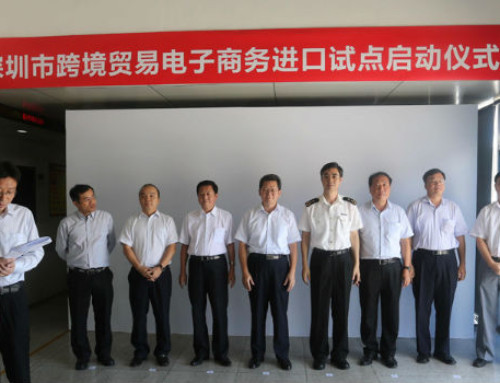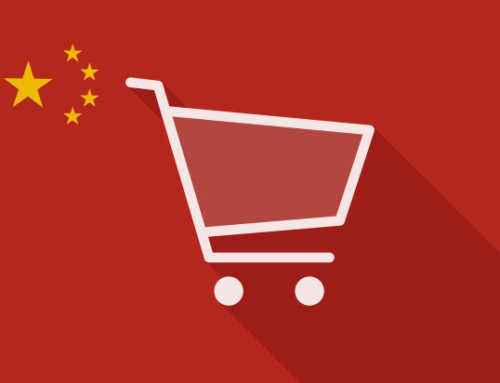Having a domestic business presence in China is a necessary part of many application and operational processes which include, for example, application for Tmall store and application for ICP Beian filing. On a more positive note, China is loosening its free trade zone policy and allowing wholly foreign entities a stepping board into China’s domestic market. This allows foreign companies more control over their China e-commerce business. However, for some branded manufacturers, it still entails significant risks in market entry. For example, one of the requirements is a minimum registered capital of 10 million yuan (about USD 1.6 million), which makes this option only suitable for larger enterprises with deep pockets and a long term time horizon over return on investment.
Therefore, for companies with less risk appetite, Jingle Office lists 3 less risky routes to help start your China e-commerce business.
Route 1: Through third-party platforms
For this method, a third-party platform is a good choice. This is a common practice. There are several third-party platforms in China for you to choose.
While the law does not restrict access to foreign companies from selling online to China through a third-party platform, each platform has its own restrictions. For instance, a foreign entity can sell goods on JingDong, but Tmall requires independent sellers to have a Chinese entity.
Both online and offline retailers, such as JD.com and Suning, offer sales channels for your product or service. Like most such channels, the benefits of an established retail network offer branded manufacturers a readily available distribution network and consumer base.
These home-grown retail brands are well established and trusted in China and offer readily available platforms to sell through. In some cases, like with Suning, they also offer offline stores; JD.com offers end-to-end services including customer service and domestic delivery, much like Amazon.com does.
On the flip side, contract negotiation with these retailers can be a time consuming process and branded manufacturers often have less control over their product presentation, pricing and merchandizing strategy.
Cross-channel inventory visibility is a challenge once products are sold to retailers, so be mindful when negotiating a returns policy, because a low sell-through can surprise you with a sudden return flow of unsold inventory. In certain cases, an open ended returns policy can also affect your revenue recognition.
Route 2: Through your standalone website
Chinese consumers are growing accustomed to buying from overseas merchants. While this practice is common in other parts of the world, it is an emerging trend in China.
Under this model, Chinese consumers buy products from foreign websites which are localized to Chinese consumers in the following manners:
- Simplified Mandarin as the common language in China, including customer service and support in Mandarin, typically using social and chat media like WeChat or online chat.
- Local payment options like AliPay International and TenPay International. These are international variances of the local payment options popular in China. They operate as wallet payment options similar to PayPal. Chinese consumers with an account can make payments in Chinese Yuan. These payment providers then settle with merchants in one of the few major world currencies such as EUR or USD.
- End-to-end fulfillment and returns from a warehouse in USA/Europe into China, including customs clearance. It will be worth looking into using “personal import tax” (行邮税) for customs clearance of packages delivered into China. Depending on different product categories, there are three levels of tax rates: 15%, 30% and 50%.
This route offers branded manufacturers the benefits of selling to Chinese consumers with lower risks while leveraging existing fulfillment capacity in Europe or the America. It is a viable method for those considering getting their feet wet by using a pilot program to test market reactions to brands and products.
Some of the disadvantages and potential pitfalls to think about:
Be prepared to spend marketing dollars to drive traffic to your website. Investments in Google’s SEO services cannot be leveraged as Google is blocked by the Chinese firewall. Instead, invest your marketing effort into Chinese search engines like com to drive traffic.
Customs clearance and delivery lead time remains one of the key challenges under this mode. Policy related to “personal import tax” (行邮税) is relatively new and implementation details are not yet uniform across Chinese customs. Control over delivery to consumers and the ability to support returns can be key drivers for customer dissatisfaction.
Route 3: Through consignment
This method allows branded manufacturers to sell locally to Chinese consumers without having to setup domestic fiscal entities. Customer service, payment collection, VAT compliance and delivery are operated domestically in China, thus providing Chinese consumers a local buying experience and returns service support.
Under this model, an end-to-end service provider does the following:
- Acts as importer of record to bring products as consignment into one of their domestic warehouses in China.
- Acts as seller of record towards Chinese consumers to collect payments in RMB and facilitate cash repatriation to your fiscal entity outside China.
- Provides VAT compliance in VAT collection, reporting and remittance.
- Provides local customer service support.
- Provides local delivery, with shorter delivery lead time.
- Provides local returns address and returns handling for buyer’s remorse or exchange.
The major benefit of this route is that it allows you to offer a local buying experience to Chinese consumers without having to setup a Chinese business entity. Using a service provider offers you more control over the sales channel and the related consumer experience. This includes a shorter delivery lead time compared to the cross border option.
Products are pre-imported into China before any online sale is made, reducing customs related risks and customer dissatisfactions.
One of the key requirements for the success of this mode is a partnership with the right service provider. Joint forecasting, operational reviews and inventory management are needed to ensure the right product mix is moved into China to meet your market’s demand.
Which Route Is Suitable for Your China E-commerce Business?
Depending on your goals, the amount of control desired and the overall risk appetite, each of the 3 routes discussed above have their relative benefits. While selling through a third-party platform (route 1) is the easiest way, it offers the least amount of channel control and influence over consumer experience.
For those who want total control over their sales channel and operations and can afford the risks involved, setting up a Chinese business entity can offer potential long term benefits (route 2).
For many others who fall in between, using a service provider offering consignment (route 3) can be a balanced option to start your China e-commerce business.
Related reading: 6 Keys to Start Your Ecommerce Business in China













